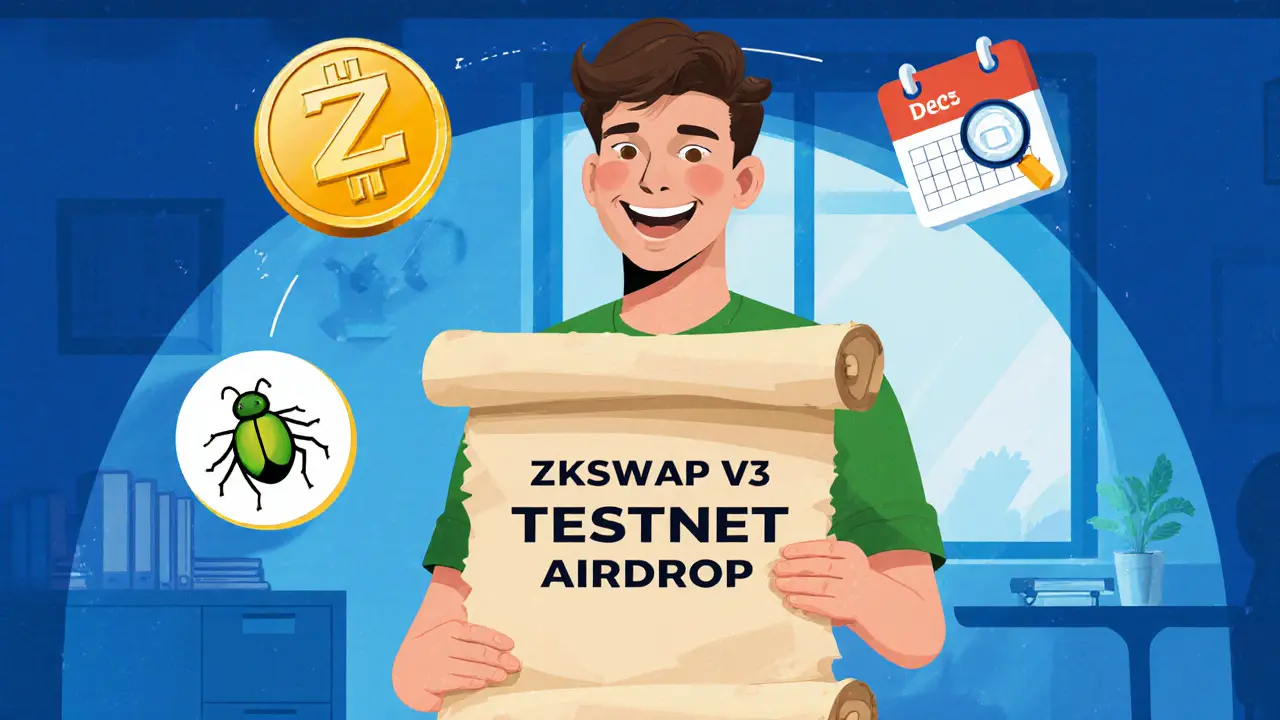Clear guide on ZKSwap V3 airdrop, ZKB token details, and the difference between ZKSwap and ZKBase. Learn eligibility, steps, and avoid common confusion.
ZKSwap Testnet – The Future of Fast, Private DeFi Swaps
When you hear about ZKSwap testnet, a public testing environment for the ZKSwap decentralized exchange that uses zero‑knowledge rollups to achieve cheap, instant trades. Also known as ZKSwap Layer‑2 testnet, it lets developers and traders experiment with privacy‑preserving swaps before the mainnet launches. ZKSwap testnet isn’t just a sandbox; it showcases how zero‑knowledge proof, a cryptographic method that lets one prove a statement true without revealing the underlying data can replace traditional order‑book models, delivering sub‑second settlement while keeping trade details hidden.
This testnet also highlights the role of a decentralized exchange, a platform that runs on smart contracts instead of a central authority, allowing anyone to trade directly from their wallet. By merging DEX architecture with zk‑Rollup scaling, ZKSwap testnet can handle thousands of trades per second without congesting the base layer. That speed matters for use cases you’ll see across the site: from cross‑border payments that need cheap, fast settlement, to utility tokens that rely on reliable liquidity. Speaking of liquidity, the testnet introduces a new liquidity provision, the process of supplying assets to a pool so traders can swap without slippage model that rewards providers with ZKSwap’s native token. This mirrors real‑world DeFi concepts discussed in our guides on single‑sided vs dual‑sided liquidity, and it lets you test impermanent‑loss strategies in a risk‑free environment.
Why the ZKSwap Testnet Matters for Today’s Crypto Landscape
First, privacy. Traditional DEXes expose every trade on‑chain, which can be traced back to users. Zero‑knowledge proof technology flips that script: transactions are validated without revealing amounts or participants. This design aligns with the blockchain immutability principles we broke down in our "How Blockchain Achieves Immutability" guide, proving that you can keep a ledger tamper‑proof while still protecting user data. Second, cost. By bundling many transactions into a single rollup proof, ZKSwap testnet reduces gas fees dramatically—often to a few cents. That mirrors the fee‑saving benefits highlighted in our exchange comparison posts, where we pit centralized platforms against low‑fee DEXs. Lower costs make it feasible for small‑value swaps, a crucial factor for emerging utility tokens and NFT airdrops. Third, speed. With sub‑second finality, the testnet removes the wait times that plague older Layer‑1 solutions. Faster confirmations improve the user experience for cross‑border remittances, a topic we explore in "How Cryptocurrency Remittances Transform Cross‑Border Payments". Imagine sending stablecoins abroad and seeing the balance update instantly—ZKSwap testnet proves that scenario is technically viable. Finally, developer friendliness. The testnet offers sandbox APIs, easy deployment scripts, and a community forum where you can share your findings. This openness encourages experimentation, whether you’re building a new utility token—like the successful examples we cataloged for 2025—or crafting a DeFi strategy that balances single‑sided liquidity efficiency against dual‑sided risk.
All these pieces—privacy, low fees, speed, and developer tools—form a web of connections that make ZKSwap testnet a microcosm of the broader crypto evolution. Below, you’ll find articles that dive deeper into each of these aspects, from technical breakdowns of zero‑knowledge rollups to practical guides on providing liquidity in a zk‑enabled environment. Explore the collection to see how ZKSwap testnet fits into the bigger picture of secure, scalable, and user‑centric DeFi.

